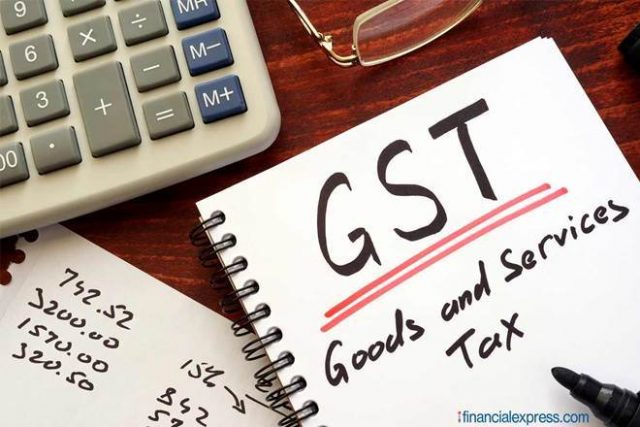In the discussion that preceded the amendment in the Constitution for GST, there were a number of thorny issues that required resolution and agreement between the Central Government and State Governments. Implementing a tax reform as vast as GST in a diverse country like India required the reconciliation of the interests of various States with that of the Centre. Some of the challenging issues, addressed in the run-up to GST, were the following:
Origin-based versus destination-based taxation: GST is a destination-based consumption tax. Under destination-based taxation, tax accrues to the destination place where consumption of the goods or services takes place. The existing VAT regime was based on the origin principle where Central Sales Tax was assigned to the State of origin where production or sale happened and not to the State where consumption happened. Many manufacturing States expressed concerns over the loss of revenue on account of the shift from origin-based taxation to destination-based taxation.

An argument put forward on behalf of producing states in support of origin based taxation is that they need to collect at least some tax from inter-State sales in order to recover the cost of infrastructure and public services provided by the State Governments to the industries producing the goods which are consumed in other states. This line of reasoning is based on the assumption that in the absence of a tax on inter-State sales, the location of export industries within their jurisdiction would not contribute to the tax revenues of the exporting state. This view was missing the fact that any value addition in a jurisdiction necessarily means extra income in the hands of the residents of that jurisdiction. Spending this income on consumer goods expands the sales tax base of the producing states and thereby contributes to their revenues. In fact, to the extent that consumer expenditures are dependent on the level of income of the residents of a State, it is the producing States that stand to gain the most in additional sales tax revenues (even under the destination basis of consumption taxes) from the increased export output.
Rate Structure and Compensation: There was uncertainty about gains in revenue after the implementation of GST. Though attempts were made to estimate a revenue-neutral rate, nonetheless it remains an estimate only. It was difficult to estimate accurately how much the States will gain from tax on services and how much they will lose on account of the removal of cascading effect and phasing out of CST. In view of this, States asked for compensation during the first five years of implementation of GST.
A Committee headed by the Chief Economic Adviser Dr. Arvind Subramanian on possible tax rates under GST suggested RNR (Revenue Neutral Rate). The term RNR refers to that single rate, which preserves revenue at desired (current) levels. This would differ from the standard rate, which is the rate that would apply to a majority of goods and services. In practice, there will be a
structure of rates, but for the sake of analytical clarity and precision, it is appropriate to think of the RNR as a single rate. It is a given single rate that gets converted into a whole rate structure, depending on policy choices about exemptions, what commodities to charge at a lower rate and what to charge at a very high rate.
1.3.2 The Committee recommended an RNR of 15-15.5% (to be levied by the Centre and States combined). The lower rates (to be applied to certain goods consumed by the poor) should be 12%. Further, the sin or demerit rates (to be applied to luxury cars, aerated beverages, pan masala, and tobacco) should be 40%.
1.4 Dispute Settlement: A harmonized system of taxation necessarily required that all stakeholders stick to the decisions taken by the supreme body, which was later constituted as the Goods and Services Tax Council (the Council). However, the possibility of departure from the recommendations of such a body cannot be completely ruled out. Any departure would definitely affect other stakeholders and in such circumstances, there must be a statutory body to which affected parties may approach for dispute resolution. The nature of such a dispute resolution body was a bone of contention. Under the Constitution (One Hundred Fifteenth Amendment) Bill, 2011, a Goods and Services Tax Dispute Settlement Authority was to be constituted for this purpose. This body was judicial in nature. The proposed constitution of this Authority was challenged because its powers would override the supremacy of the Parliament and the State Legislatures. The Constitution (One Hundred Twenty-Second Amendment) Bill, 2014 departed from the previous GST amendment bill and proposed that the Goods and Services Tax Council may decide about the modalities to resolve disputes arising out of its recommendations.
Alcohol and Petroleum products: Alcoholic liquor for human consumption and petroleum products are major contributors to the revenue of States. As States were uncertain about the impact of GST on their finances and moreover loss of autonomy in the collection of tax revenue, States unanimously argued for the exclusion of these products from the ambit of GST. In the 115th Amendment Bill alcoholic liquor for human consumption and five petroleum products namely crude petroleum, high-speed diesel, motor spirit or petrol, aviation turbine fuel and natural gas were kept out of GST. But in the 122nd Amendment Bill, only alcoholic liquor for human consumption was kept outside GST and above mentioned five petroleum products were proposed to be brought under GST from a date to be recommended by the Council. The Central Government has also retained its power to tax tobacco and tobacco products, though these are also under GST. Thus, to ensure a smooth transition and provide a fiscal buffer to States, it was agreed to keep alcohol completely out of the ambit of GST.

